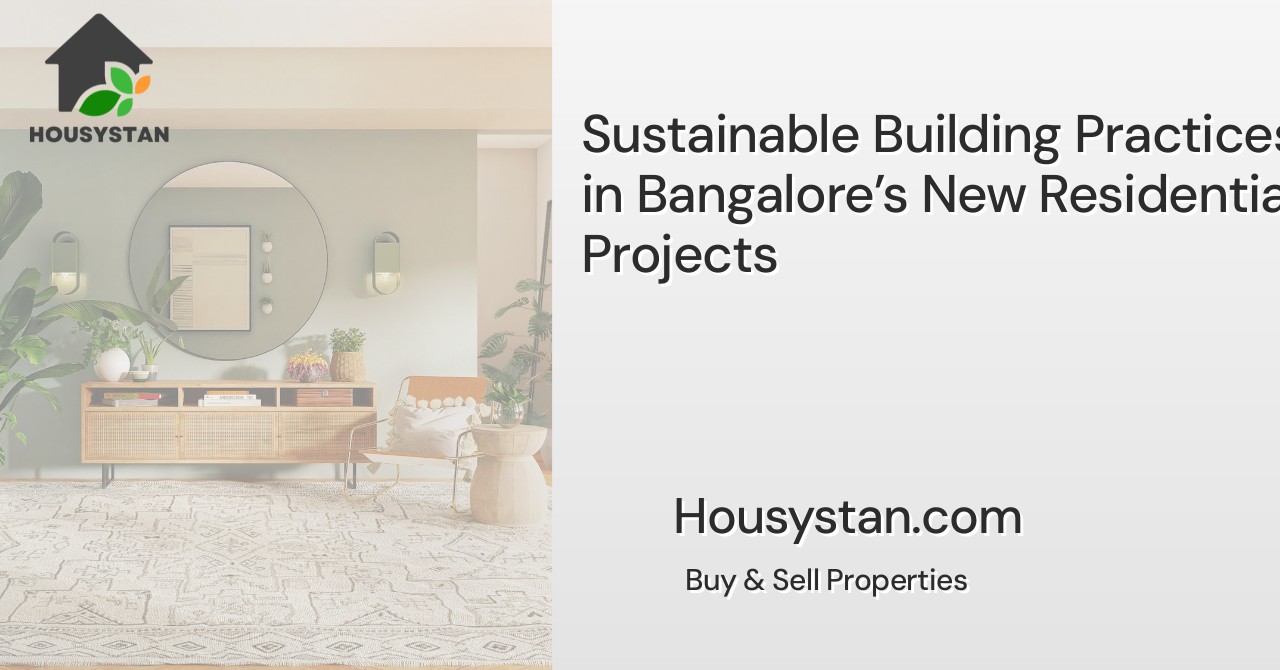Sustainable Building Practices in Bangalore’s New Residential Projects
Read latest blogs and articles from Housystan

The Information mentioned here was last updated on:
11/12/2025Bangalore, known as the Silicon Valley of India, is rapidly evolving with a surge in modern residential developments. As urbanization accelerates, sustainable building practices have become a priority for real estate developers in the city. Homebuyers in Bangalore are increasingly seeking eco-friendly homes that blend comfort, efficiency, and environmental responsibility, driving a significant shift in construction methodologies across new residential projects.
Innovative architectural designs are now being adopted throughout Bangalore's real estate landscape. Reputed builders are implementing green building standards such as IGBC and LEED certification to ensure that new properties minimize their ecological footprint. These projects prioritize energy-efficient features, including LED lighting, solar panels, and smart climate control systems. Rainwater harvesting, waste management facilities, and water-efficient plumbing fixtures are integrated into contemporary apartment complexes and gated communities to promote resource conservation.
Bangalore’s climate also influences sustainable design choices. Developers are opting for locally sourced materials like fly ash bricks, low-VOC paints, and natural stone to reduce transportation emissions and support the regional economy. Additionally, the use of insulated windows and well-planned ventilation systems keeps interiors cool during summer, lowering reliance on air conditioning and reducing energy consumption.
- Verified Tenants/Buyers
- Unlimited Property Listing
- Zero subscription/charges fee
Many new residential projects in areas such as Whitefield, Sarjapur Road, and Electronic City are setting new benchmarks in green construction. These communities often feature landscaped gardens, native tree plantations, and dedicated green spaces that enhance urban biodiversity while creating serene environments for residents. Rooftop gardens and vertical planting solutions are also becoming popular, further improving air quality and aesthetic appeal.
For those searching for homes in Bangalore, sustainable living is no longer just a trend but a necessity. Developers in the city are committed to delivering long-term value through smart, eco-conscious designs that meet the needs of present and future generations. As a result, Bangalore’s new residential projects are emerging as models of innovation, offering not only modern amenities but also a commitment to a greener, healthier urban lifestyle.